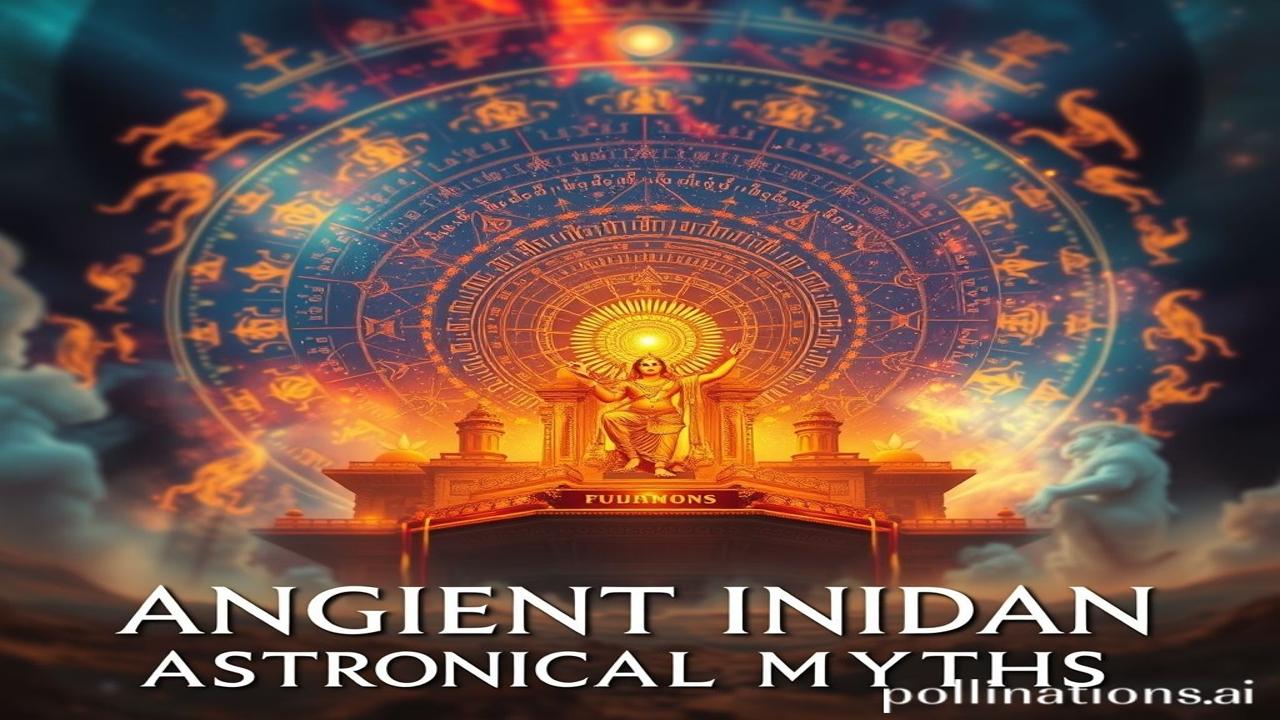Sitaaron Ki Kahani, Dhool Bhari Zabaani: Unraveling Ancient Indian Astronomical Myths
Kabhi raat mein akele aasmaan ko dekha hai? Just imagine, thousands of years ago, jab light pollution nahi tha, toh woh sitaare kitne chamakdar dikhte honge! The ancient seers of India, with nothing but their sharp minds and keen eyes, wove incredible tales around those celestial bodies. Aaj hum unhi kahaniyon ki dhool jhatakenge, unveiling the fascinating world of ancient Indian astronomical myths.
The Cosmic Canvas: A Historical Perspective
Ancient Indian astronomy, or Jyotisha, wasn’t just about calculating eclipses or predicting the seasons. It was deeply intertwined with mythology, philosophy, and daily life. Its roots can be traced back to the Rigveda (c. 1500-1200 BCE), with later developments documented in texts like the Vedanga Jyotisha, Surya Siddhanta, and Aryabhatiya.
Yeh Jyotisha sirf dates aur calculations ka khel nahi tha. It was a way of understanding the cosmos and our place within it. Think of it as ancient India’s version of theoretical physics, blended with a heavy dose of storytelling. Imagine the rishis sitting under the starlit sky, debating the movements of the planets and the nature of reality!
Life Under the Stars: A Glimpse into Ancient India
Picture this: A farmer in the Indus Valley Civilization, gazing at the Pleiades constellation, knowing that its appearance in the night sky signals the arrival of the monsoon. Or consider a young artisan in the Mauryan Empire, meticulously carving zodiac symbols onto a pillar, hoping to bring good fortune to the king.
Ma Rukmini ne aaj apne bête ko suraj devta ke baare mein ek kahani sunai. “Dekho beta, suraj devta har roz apne rath mein aate hain, aur unke saare ghode alag rang ke hain!” The stories of the stars weren’t just abstract concepts; they were woven into the fabric of everyday existence, providing comfort, guidance, and a sense of belonging in a vast universe.
Legacy in the Modern World: Echoes of the Past
Even today, the echoes of ancient Indian astronomy resonate in our lives. Our festivals, like Diwali (linked to the zodiac sign of Libra) and Makar Sankranti (Sun’s northward journey), are based on astronomical calculations. The practice of matching horoscopes for marriage is another enduring example of Jyotisha‘s influence.
And let’s not forget the powerful symbolism that permeates Indian art and architecture. The lotus motif, often associated with the sun and cosmic creation, can be seen everywhere from ancient temples to modern logos. Yeh sab Bharatiyata ka ek zinda misaal hai – a constant reminder of our rich heritage.
Myth vs. Reality: Unraveling the Truth
Myth: Jyotisha is just astrology and has no scientific basis.
Truth: While Jyotisha incorporates astrological elements, it also has a strong foundation in mathematical astronomy. Ancient Indian astronomers made significant contributions to trigonometry, algebra, and calculus, which were crucial for their calculations. Their observations were remarkably accurate, considering the limited technology available at the time.
Sensory Symphony: Painting the Past
Imagine the scent of sandalwood incense wafting through a dimly lit observatory. The rough texture of the stone walls beneath your fingertips. The chanting of Vedic hymns resonating in the air, mixed with the scratching of styluses on palm leaves as scholars meticulously record their observations. The rhythmic ticking of water clocks measuring time with incredible precision.
Echoes of Eternity: A Final Thought
“कालस्य कुटिला गतिः” (Kaalasya Kutila Gatih) – “Time has a crooked gait.”
Even as time marches on and technology advances, the mysteries of the universe continue to beckon. The ancient astronomical myths of India remind us that we are all connected to something larger than ourselves – a cosmic dance that has been unfolding for millennia. Let’s keep those stories alive, remembering that looking up at the stars is not just about science, it’s about connecting with our past and imagining our future.
